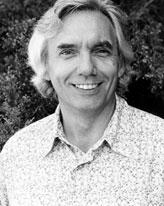Great Masters from Yoga’s Remote Past
by Georg Feuerstein

27 May 1947 – 25 August 2012
The following names are listed in approximate chronological order.
Hiranyagarbha is traditionally regarded as the originator of Yoga. The name means “golden germ” and refers to the higher mind in which all great yogic insights and intuitions are born. If ever there was an actual person by that name, we know nothing about him.
Dîrghatamas (third millennium B.C.E.) was a Vedic seer, whose name means “long darkness.” He lost his eyesight at a young age but gained profound inner vision through his Yoga practice.
Râma (c. 2000 B.C.E.) was the ruler of the late Vedic kingdom of Ayodhyâ, who governed with wisdom and justice, demonstrating that Yoga is not only for cave-dwelling mystics. In subsequent centuries he was deified on account of his profound spiritual realization. His heroic life story is related in the Râmâyana epic, which is available in English translation.
Agastya (c. 2000 B.C.E.) is remembered for bringing yogic teachings from northern India to Tamilnadu. He was also a master of alchemy and has a number of Tamil works attributed to him.
Yajnavalkya (c. 1500 B.C.E.) was a great sage who figures as a principal teacher in some of the Brâhmanas and early Upanishads. He taught that our true nature (the Self or âtman) is eternal and that it is identical to the ultimate foundation of the universe as a whole.
Krishna (c. 1500 B.C.E.) is famous as the sagely teacher of Prince Arjuna, the hero of the Mahâbhârata and the Bhagavad-Gîtâ introduced above. Because he had realized the unitary nature of all things, he was later deified.
Nârada (c. 1500 B.C.E.), a sage and musician who is credited with the authorship of various works, including the Bhakti-Sûtra (“Aphorisms on Love/Devotion”), a cardinal text on Bhakti-Yoga (the Yoga of devotion) that belongs, however, to a much later era.
Lakulin (c. 100 B.C.E.) was the leader of a group of fierce-looking ascetic yogis who carried a club as their distinguishing mark.
Patanjali (c. 150 C.E.) was the compiler of the Yoga-Sûtra, the foundational work of lassical Yoga.
Tirumûlar (c. 300-600 C.E.) is one of southern India’s most celebrated yogi-poets, who composed the Tiru-Mantiram (“Sacred Words”). This is a beautiful and inspiring Yoga text filled with profound Tantric knowledge and written in the Tamil language.
Matsyendra Natha (c. 550-700 C.E.) was a great master of Tantrism (or Tantra Yoga) who typically figures as the first teacher in the lineage of Hatha-Yoga.
Gaudapâda (c. 600 C.E.) was a great adept and thinker of the nondualist tradition and originator of Asparsha-Yoga (the Yoga of non-contact), which is concerned with achieving a sense of inner detachment from every conceivable experience. He wrote a masterful yogic commentary on the Mândûkya-Upanishad (“SecretTeaching of the Mândûkyas,” a priestly family).
Shankara (788-820 C.E., possibly a century earlier) was a disciple of a disciple of Gaudapâda and is widely regarded as one of India’s foremost yogi-philosophers. His name is particularly associated with the philosophy of Vedânta (“Veda’s end”), which insists that there is only the singular reality and that the manifold world of everyday experience is due to a trick of the mind. The technical Sanskrit term for this trick is mâyâ, often interpreted to mean “illusion.”
Ântâl (c. 850 C.E.) is among South India’s most beloved woman-saints and yoginîs. She embodied the lofty deals of Bhakti-Yoga (the Yoga of devotion).
Abhinava Gupta (c. 950 C.E.) was responsible for formulating the classical expression of Kashimiri Shaivism.
Goraksha Nâtha (c. 1000 C.E.) was Matsyendra Nâtha’s greatest disciple and is credited with originating the school of Hatha Yoga. He and his teacher are remembered as miracle workers throughout northern India.
Râmânuja (1117-1137 C.E.) was a yogi-philosopher who avowed a form of Bhakti-Yoga (the Yoga of devotion) and created many scholarly works.
Jnânadeva (1275-1296) was an extraordinary yogi-poet, whose yogic commentary on the Bhagavad-Gîtâ belongs to the most beautiful and powerful works in the Marathi language. He was still a teenager when he wrote it.
Caitanya (1485-1533 C.E.) was a master of Bhakti-Yoga, who could instantly enter into a state of joyous ecstasy. The modern Krishna Consciousness movement traces its teaching lineage back to him.
Mîrâ Bâi (c. 1498-1546? C.E.) was a great yoginî-poetess who combined Bhakti-Yoga with Kundalinî-Yoga that is, who used the energy of love and devotion to awaken the body’s dormant psychospiritual energy (kundalinî). “Strange,” she wrote in one of her poems, “is the path of love and devotion.”
There also have been great Yoga masters in Buddhism, such as Gautama the Buddha himself, Nâgârjuna, Asanga, Atîsha,Tsongkhapa, Tilopa, Nâropa, Marpa, and Milarepa. Their writings and life stories are available in English and are most instructive to read. Similarly, Jainism has produced many accomplished adepts, including Mahâvîra the founder of Jainism himself, Haribhadra, and Hemacandra, to mention but a few.
In many, if not most, cases we only have the legends woven around these masters, but for some of them we have actual biographies. They illustrate what traditional Yoga is all about and are always worth reading for clarification, inspiration, and encouragment. In a few cases, especially for more recent teachers, we also are in possession of some or all of their written works, be it in Sanskrit, Tamil, Tibetan, or some other vernacular language.
The literature of Yoga is immensely rich. There are literally hundreds if not thousands of manuscripts, most of which are still only known by name and which, sadly, are rotting away in India’s severe climate. There are, however, a number of key scriptures available in English renderings. Dedicated Yoga students will find them endlessly fascinating and informative. The dozen or so
Yoga researchers around the world continue to translate and study these texts. Many of them also endeavor to practice their timeless teachings.
© 1998, 1999 by Georg Feuerstein